#Sikhism punjab
Explore tagged Tumblr posts
Photo

Sarbloh Kara Sikh Kada Kakaar Iron Smooth Karha Singh Kids Size Loha Bangle EE18
Sarbloh Kara Sikh Kada Kakaar Iron Smooth Karha Singh Warrior Loha Bangle
Design EE18
All sizes from Infants to Adults available. Please check variation list.
Singh is Bling Movie Style Kara
Weight of Kara is approximate 17-35g (Variable depending upon the size of kara) .
Thickness from outer Circumference to Inner Circumference is approx. 4mm
Width is approx 5.6mm - every Kara is Handmade and Unique - therefore thickness may vary.
These kara are from the Holy City of Amritsar (Golden Temple/Darbar Sahib). Size is inner diameter of Kara.
There may be little bit rust, grinding marks or cuts may present which is seen commonly in all SARBLOH KARA due to purity of the metal/wrought iron and these kara are made in a traditional way. These characteristics give kara authentic antique look as it was in Guru Sahib's time.
A kara ਕੜਾ کڑا कड़ा KADA, is a steel or iron (sarb loh) Bracelet, worn by all initiated Sikhs.
It is one of the five kakars or 5Ks — external articles of faith — that identify a Sikh as dedicated to their religious order. The kara was instituted by the tenth Sikh Guru Gobind Singh at the Baisakhi Amrit Sanskarn in 1699. Guru Gobind Singh Ji explained: He does not recognise anyone else except me, not even the bestowal of charities, performance of merciful acts, austerities and restraint on pilgrim-stations; the perfect light of the Lord illuminates his heart, then consider him as the immaculate Khalsa. The kara is to constantly remind the Sikh disciple to do God's work, a constant reminder of the Sikh's mission on this earth and that he or she must carry out righteous and true deeds and actions, keeping with the advice given by the Guru. The Kara is a symbol of unbreakable attachment and commitment to God. It is in the shape of a circle which has no beginning and no end, like the eternal nature of God. It is also a symbol of the Sikh brotherhood. As the Sikhs' holy text, the Guru Granth Sahib Ji says, "In the tenth month, you were made into a human being, O my merchant friend, and you were given your allotted time to perform good deeds." Similarly, Bhagat Kabir reminds the Sikh to always keep one's consciousness with God: "With your hands and feet, do all your work, but let your consciousness remain with the Immaculate Lord." The basic kara is a simple unadorned steel bracelet, but other forms exist. It was historically used like a Knuckle-duster for hand-to-hand combat. Battlefield variations include kara with spikes or sharp edges. Sikh soldiers of the British Indian army would settle disputes by competing in a form of boxing known as loh-musti (lit. iron fist) with a kara on one hand. Brilliant finish and very decorative. Ideal gift item for loved ones on all occasions.
P.S. Colour of item may slightly vary due to camera flash and light condition.
��PLEASE NOTE: Please measure/check size of your kara/bracelet first while ordering to avoid any hassle or posting it back to us and paying extra for p&p for exchange and swap of kara with other desired sizes. There will be charge of £3.50 p&p towards exchange/swap of Kara for any size issues for UK buyers and £9.99 p&p for international buyers that needs to be paid by PayPal in advance or interested buyer can send us pa repaid self addressed envelope for any exchange/swap along with the original item in its original packaging and buyer should also return us the gift item/bags sent along with the item for appreciation of purchase. We may post back gift items/bags along with the swapped item. P.S. Colour of item may slightly vary due to camera flash and light conditions. Some Kara may have negligible small black grinding mark on the kara joint. This is always seen on all kara as most of the Kara making/shaping work is done by hands. However, this do not affect the quality/look of Kara.
https://www.ebay.co.uk/itm/Sarbloh-Kara-Sikh-Kada-Kakaar-Iron-Smooth-Karha-Singh-Kids-Size-Loha-Bangle-EE18-/256235922693
#Sikh singh kaur#Khalsa punjabi kara#steel kada#Sikhism punjab#panjabi Panjab#steel bangle#brass bangle#copper bracelet#sikh kakaar 5ks#sikh kakar#Khalsa bangle#sikh karra#Sarbloh kara#stainless steel kara
0 notes
Text

1968 picture of Akal Takht. Amritsar, Punjab, India from the Wim Swann Collection.
#eh mera punjab#this is my punjab#punjab#punjabi#Akal Takht#Amritsar#Panjab#Sikhs#Sikhism#1968#Heritage#Virsa
49 notes
·
View notes
Text
DHAN BABA DEEP SINGH JI
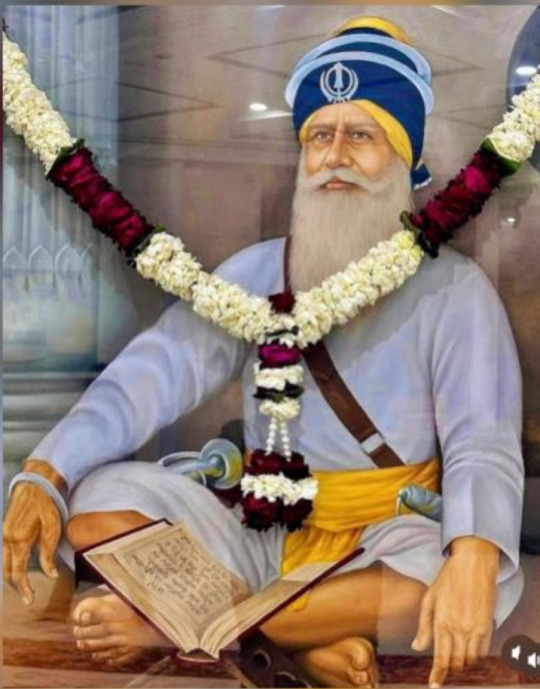
BABA DEEP SINGH JI SHAHEED 🙏🏻 (26 January 1682 - 13 November 1757)
“ਜਉ ਤਉ ਪ੍ਰੇਮ ਖੇਲਣ ਕਾ ਚਾਉ॥ ਸਿਰੁ ਧਰਿ ਤਲਿ ਗਲੀ ਮੇਰੀ ਆਉ॥ ਇਤੁ ਮਾਰਗਿ ਪੈਰੁ ਧਰਿਜੇ ॥ ਸਿਰੁ ਦਿਜੈ ਕਾਣਿ ਵ ਕੀਜੈ ॥੨੦ ॥”
( If you desire to play this game of love with Me (god), Then stop onto My Path with your head in Hand. When you place your feet on this Path, Give me your head and don’t pay any attention to public opinion. ॥20॥)
{From: Guru Granth Sahib Ji, Ang: 1410 to 1412, section: Salok Varan Thay Vadhekh }
Baba Deep Singh ji was a Sikh leader known for his bravery and devotion to Sikhism also one of the most hollowed martyrs in Sikhism. He is remembered for his sacrifice and devotion to the teachings of the Gurus .
Baba Deep Singh ji was born on 26 January 1682 in Sandhu Jatt Sikh family. His father name was “Bhai Bhagta ji” and he was a farmer and his mother was “Mata Jioni Ji”. He born in Pahuwind village in Tarn Taran, Amritsar district of Punjab, India.
He was the first head of Misl Shaheedan Tarna Dal and first head of Damdaki Taksal, then head of Sharomani Panth Akali Buddha Dal.
The Battle of Amritsar, also known as the “Siege of Amritsar”, occurred in 1757. It was a fierce battle between the Sikhs and the Mughal forces. The Sikhs were defending the city Amritsar and the Golden Temple from the Mughals Afghan Army. During the battle, Baba Deep Singh offered prayers before starting “May My Head Fall At The DARBAR SAHIB”. Baba Deep Singh, who was in his 70s, displayed exceptional courage and determination. Despite being severely wounded, he continued fighting and ultimately fulfilled his vow to reach the Golden Temple. His act of bravery and sacrifice is celebrated in Sikh history and culture.
In 1757 on 13 November, during the Battle of Amritsar, he fought fearlessly and sacrificed himself . The Battle of Amritsar strengthened the resolve of the Sikh community and solidified their commitment to defending their faith and sacred sites. It also contributed to the historical significance of the Golden Temple in Sikhism.
He also fought the Battle of Chapal Chiri (1710), Battle of Sadhuara (1710) and Siege of Sirhind (1710) alongside with BaBa Banda Singh Bahadur.
His courage, dedication and legacy is a powerful reminder of the strength of faith and the importance of standing up for what you believe and also for religion. Baba Deep Singh Ji's unwavering determination and fearlessness in the face of adversity are truly inspiring. His commitment to protecting the Golden Temple and his willingness to sacrifice himself for his beliefs are qualities that inspires us to be stand up for ourselves.
#sikhism#sikh#khalsa#babadeepsinghji#amritsar#punjab#punjabi#history#martyrs#writers on tumblr#religion#january#trendingtopics#writing community#lu warriors
10 notes
·
View notes
Text
Saw arsehat yesterday
Things are getting better. I have no desire to be in love with him anymore. And honestly, I’m fine with that. To be honest, as much of a shock the divorce was, I was glad he initiated it. It was something I had considered, but never wanted to bring up.

However, I’m coming to terms more n more with the pain he caused me after. I was NEVER jealous of him having a kid. I’ve never wanted kids. I was hurt by his secrecy, and his weird behaviour. Furthermore, his lack of ability to be responsible for his actions hurt. He did a stupid, and still can’t own up to it. He also tends to flip flop on things (like kids!)
The pain is lessening, and that’s good. He doesn’t feel so awkward to be around. He is in many essences, still a child.
He picked me up from auntie n uncles place last night. He says to me ‘I didn’t know adulting would be so hard. I don’t have time for anything. Does it ever go away or get better? You remember how badly I wanted to leave auntie n uncles n be in my own?’ I said we’ll move back then lol. He says ‘I can’t, because their place is a mess n it made me sick.’ I said well that’s fair, but then u gotta deal with adulting lol
He then says he still would like a kid. I said if u think adulting alone is insane, adding a kid multiplies it. I didn’t say jt, but I thought If you’re having trouble doing basic adulting, having a kid is not for u.


I’ll let that sink in.
He kept the baby thing secret, because he was afraid he’d be judged by friends and family, because in Indian culture, gossip is particularly common n takes on a certain flavour. The problem with this is that he deserves it. He did something shady, and was afraid to own up to it. He made things worse by being shady. If he hadn’t been so shady, he might not have to worry as much.
Also, if u havnt done anything shady, then have confidence. When people falsely accused me of being a paedophile, racist, misogynist, etc. (different occasions over the years) I stood me ground, because I knew I had never done any of these things, and they were manipulating the story for their benefit. They purposely misinterpreted my actual intentions. I had nothing to be guilty of, and was gaslit. Their accessions often contradicted themselves and made no sense in reality. (Such as above, when people thought I was jealous of Arsehat for having the kid, or when they thought I was sexually into kids. I have stated many times that I never wanted kids, and I prefer them kept away from me, and fully clothed. I was actually more into older men, and that’s why I like the engines. I see them as older men with a variety of personalities. Yes, even Percy.) As for racist - I actually like all cultures. I don’t like when people manipulate or exploit others, and I hate gratuitous attention seekers. These things often work hand in hand, especially on social media soap boxes. So yeah. I have pure intentions, n I stand by that. Me physical record can attest - I’ve never been arrested, n I try to avoid drama, but I do try to help n guide others to do right n be happy. When I feel they are deserving of/ are willing to b helped.
Anyhoo, it feels good to be processing the lingering confusing feelings, and allowing them to go their way as well. I’m finally starting to move on from it more emotionally, n it feels good. I feel less uncomfortable being around him. This is why I don’t like being around men who belong or belonged to other women and why male virginity/purity is important to me. They make me feel deeply uncomfortable in an unsettling way. They make me feel always on guard. I don’t trust them. This is what causes the panic attacks to get ugly and cycle. It’s me body warning me that there’s danger ahead, and that if I don’t get out fast, she’s gonna blow.

This is not to say that blokes who have never had relationships and are virgin cannot create problems or drama, but there’s less of a chance that others get involved n make it worse. I have a long history of experience with abuse. I have ptsd. This is what I deal with. To be fair, I don’t have this issue with gay blokes (whether they have/had a man or not) or with sex/romance repulsed blokes who havnt been with anyone. Im not interested in them sexually or romantically, but i do feel I can trust them more.
I used to trust arsehat in that way. Though he wasn’t particularly sexual towards me most of the time, he also wasn’t a womaniser. I felt secure with that. When he had the secret baby, and I wasn’t filled in on details, it wasn’t the baby party that really disturbed me. It was the leaving out of details that got to me. I found out when me own roommate discovered his roommates instagram posts. If he had been honest n clear from the start, and maybe if I’d heard from her, I’d have felt better from the get go. But whatever. It’s hard to let go, and I’ll never forget the experience- however, I’m processing those negative feelings, and starting to finally let go of them. It feels good. He’s still an immature weirdo, but that’s what makes him family I guess. lol. He’s not a bad guy….hes just Peter Pan with a turban.
And me, I’m happier with me trains. And cats. And without sex/romance. Me own imagination is satisfying enough.

#thomas and friends#thomas the tank engine#trains#steam engine#steam locomotive#train#ttte#life lessons#life is strange#maturity#sikhcommunity#sikhism#punjabi#punjab#india#indian#apothisexual#asexual stuff#aseuxal#aromantic#aro
2 notes
·
View notes
Text
Countries that are no more: Sikh Empire (1799-1849)
Though short lived, this empire was notable for a few reasons. First, it was the last major bastion of native rule on the Indian Subcontinent before a century of unchecked British rule which had already been gradually expanding over the preceding century. Secondly, it was diverse & tolerant in its ethnic and religious composition, not just in the general populace but more uniquely in its administration. Finally, it was notable for the religion of its leaders, perhaps the only time in history where Sikhs reigned atop an empire. This is the Sikh Empire.
Name: In English, the empire is known as the Sikh Empire. In Persian this was translated as Sarkār-i-Khālsa or the Khālasā Rāj in Punjabi. These languages were important administratively within the empire. Essentially to mean empire or kingdom of the Sikhs. Khalsa is a Punjabi term for the Sikh community more broadly and specifically means "pure" as in one professes to follow the Sikh faith and has undergone the Amrit ritual ceremony of initiation, specifically baptism.
Language: The Sikh Empire was notable for its many languages. Persian was its administrative language at court. Persian had been the language of diplomacy, administrative and the high arts from the Middle East to the Indian Subcontinent for centuries in part due to the spread of Islam to India. It was the court language of the greatest Islamic polity in the history of India, the Mughal Empire (1526-1857). Other languages which in the empire included Indo-Aryan languages such as Punjabi which was the dynastic native tongue of the ruling family and various Punjabi dialects which made up the lingua franca of the core territory of the empire. Kashmiri and Dogri were spoken in some parts as well, also Pashto (Pashtun) also known as Afghani. There were numerous others which also took place in its territory in modern India, Pakistan and Afghanistan.
Territory: At its peak, the empire held roughly 200,000 sq miles of territory. The territory was centered in the Punjab region of modern Northwestern India and Eastern Pakistan. It covered territory in the modern states of India, Pakistan, the Afghanistan & Pakistan border and even small parts of Western Tibet in modern China.
Symbols & Mottos: The motto of the empire was ਅਕਾਲ ਸਹਾਇ Akāl Sahāi which is Punjabi for "With God's Grace" and its anthem was ਦੇਗ ਤੇਗ ਫ਼ਤਿਹ Dēġ Tēġ Fatih Punjabi for "Victory to Charity and Arms." The also used a triangled flag called the Nishan Sahib. This flag was used by Sikhs prior to the 1799 establishment of the empire and continued to have use after its 1849 disestablishment. It is usually depicted as an orange inner field with a green outer field with golden trim and patterns both on the green outer field and orange inner field. There were also individual flags for various Sikh, Hindu and Muslim regiments within the army as well. The Muslim ones often sharing similarity with the modern Pakistan flag.
Religion: Sikhism was the dynastic religion and religion of roughly 6-12 percent of the overall population. 50-80 percent of the populace was Muslim and 10-40 percent Hindu. There were also smaller populations of Christians and Jews as well. Religious tolerance was practiced as a matter of policy throughout the empire. Sikhs certainly benefitted from a ruling dynasty that was of their community however with larger populations of Muslims and Hindus among their territory, policies of accommodation and tolerance were practiced to other faiths as well. Likewise Indian and European Christians could practice their faith and rise to important military and government positions and even some Jews featured in the military as well. Promotion within the military and government more broadly had less to do with religion, ethnicity or geographic origin than with merit and personal loyalty.
Currency: The currency of the empire was called Nanak Shahi Sikee, these were metal coins usually of silver composition.
Population: The population was estimated to be roughly 12 million people at its peak in in the late 1830s and early 1840s.
Government: The government could be characterized as a federal monarchy with a later adoption of elements of absolute monarchy. Its origins lie in the Sikh community which started in the Punjab region of the Indian Subcontinent. This region consists of modern Pakistan (mostly) and some of India (remaining portion). It spans the five major rivers west to east (Indus, Jhelum, Chenab, Ravi & Sutlej). Sikhism had its origins and greatest core in the Punjab region among Punjabis. Though it is a relatively young religion by comparison to Hinduism and Islam, elements of overlap and interaction with both of these older faiths have influenced it. Nonetheless, Sikhs faced alternating periods of tolerance and persecution throughout the Mughal Empire and many Sikhs hid in jungles near the Himalayan foothills as refuge from the Muslim Mughals and various local Hindu hill tribal chiefs who persecuted them.
In response to this persecution from their neighbors, Sikhs formed militias to protect their religion community, these militias were called jathas and in turn these formed into a larger Dal Khalsa (Sikh army) circa 1735-1738. in 1748 at Amritsar, India, the most holy city for Sikhs in 1748 these militias were reorganized into a misl which is an Arabic term for equal. These misls became known as the Sikh Confederacy or Misl period (1748-1799). There were twelve sovereign Sikh misls formed and later a Muslim ruled misl which created a federation or confederacy united by Sikhism to preserve and protect their religious faith. There was uneven strength between the misls and some tried to expand at the expense of others, but they still formed a common defense of their community and even held biannual legislative meetings in Amritsar to address matters of the community.
The Mughal Empire suffered major decline in the 18th century following the death of its emperor Aurangzeb in 1707. The combination of a ruined economy from expensive wars, decentralization of power and the expanse of the Hindu oriented Maratha Empire (1674-1818) from the Western Deccan Plateau all contributed to its decline and creation of a power vacuum in parts of India, including the Punjab. To make matters worse, Nader Shah, the Shah of Persia invaded the Mughal Empire in 1739 and sacked the Mughal capital at Delhi. The plundering of riches from the Mughal capital was so great that Persia experienced three years exempt from all internal taxes. In this context the already persecuted Sikhs sought greater mutual defense, though their political autonomy remained relative to their respective misl. Despite the occasion inter-fighting with each other. Other problems came from the Afghan Durrani Empire which grew in the wake of Nader Shah's passing in Iran. The Durrani Empire would expand into Northern India including the Punjab and make the Mughals their vassals especially after defeating the Maratha Empire in 1761 at the Third Battle of Panipat. The Afghans would battle the Sikh Misls many times which aimed to defend themselves in the power vacuum from the Mughal decline.
The founder of the Sikh Empire proper, who united all the thirteen misls was a man named Ranjit Singh (1780-1839) who was of Jat-Punjabi ethnic origin and specifically Jat Sikh ethnoreligious families. His father Maja Singh and grandfather Charat Singh were the founders and chiefs of the Sukerchakia Misl. Ranjit was afflicted with smallpox as a child and left him blind in his left eye and scarred on his body, features which were noted by observers from Europe later in life.
Ranjit's father died when he was 12 and he took over chiefdom of the Sukerchakia Misl which was among the five most power Sikh misls. Through marriage Ranjit had alliances with two of the other top five misls. The Kasur misl near the major city and traditional capital of the Punjab of Lahore was controlled by a Muslim who assisted the Afghans in their invasions of India. Ranjit Singh defeated an Afghan invasion in 1797 in battle. In 1798 another Afghan army was checked by Ranjit Singh through scorched earth tactics.
in 1799 Ranjit Singh took Lahore using a combined 50,000 strong army made from his misl and that of his mother-in-law. This was traditionally dated as the founding of the Sikh Empire as Lahore would serve as its capital but Ranjit Singh would be formally vested as the Maharaja (King) of the Punjab in 1801.
Ranjit Singh held many titles, but the principal ones were Maharaja of the Punjab and Sarkar Khalsaji (Head of the Khalsa) which showed his titular leader status over the Sikh army and other misls. His authority was both geographic in nature and communal-religious in nature (to a degree).
Ranjit Singh would rule and expand the Sikh Empire until his death in 1839. The empire would survive roughly a decade after his demise.
Ranjit Singh was tolerant towards background in his governance and believed in merit and loyalty above all else. He hired Sikhs, Muslims, Hindus and Christians into his military and civil administration. These could also be Indians and Europeans with some French, Italian, Spanish, Russian & German officers taking leadership within his military. Even a few American adventurers such as Josiah Harlan and Alexander Gardner found work within Ranjit Singh's empire. The former Harlan (born to Quakers in Pennsylvania) taking on a governorship and the latter Gardner who was said to be born to a Scottish or Irish (possibly Scots-Irish) fur trader in modern day Wisconsin and had travelled to Central Asia dressed in a turban decked in Scottish tartan pattern joined the Sikh Empire's military where he served as a colonel and commanded the artillery. Ranjit refrained from hiring British officers joining his ranks but still communicated with the British East India Company which was Britain's state sponsored corporation bent on controlling India for its geostrategic and economic benefits. He relented slightly after 1835 and hired some British into his ranks.
Ranjit was secular and tolerant in his rule overall but personally followed Sikhism, he restored Sikh Gurdwaras (temples) and also prayed with Hindus in their own temples and upheld the Hindu sacred protection of cows and prevented their slaughter under punishment by death. Likewise, he had standing orders that his army was never to loot or molest civilians especially when conquering new territory and to not destroy houses of worship. All discipline was to be strictly enforced under his order. Observers noted that Ranjit would increase the salary of those who didn't engage in corruption and slice the nose off of those who were said to misbehave or act corruptly in his administration of state affairs. The mutilation was not only physical discipline but a psychological scar to deter bad behavior and forever mark one as untrustworthy.
The above is the consensus of most accounts, there are some Muslim accounts from the mid-19th century which portray Ranjit's reign as despotic and biased towards Kashmiri Muslims. The overall picture is one of a complex individual but generally agreed upon to be tough and strict at times but also overall pragmatic and not willing to let religious or national background create a personal bias towards their utilization in his administration.
After Ranjit's death the rules of succession weren't clearly established and in quick succession his son, grandson and subsequently two other sons ruled in his wake with his son Duleep Singh reigning the longest from 1843-1849. Duleep would later live in exile in Europe following defeat his by the British.
Military: The Sikh Khalsa Army at its peak in 1839 was roughly 125,000 men strong and it had infantry, cavalry and artillery components. Its origins lied in the Sikh jathas of the late 17th and early 18th centuries which passed onto the Sikh Misl (Confederacy) period of the later 18th century. These were typically cavalry based and engaged in hit and run tactics against the Mughals, Maratha and Afghans. Later Ranjit would modernize the Sikh army along European principles utilizing European and American recruited officers and by purchasing and developing modern weapons.
The military were given performance standards for logistics of troop deployment, maneuver and marksmanship. Likewise, the army was divided into three segments of elite troops, regulars and irregulars. Each with its own infantry, cavalry and artillery component. Even European style medals and awards for merit could be issued, including the Order of Merit with Ranjit's portrait featured on the medal.
Ultimately, the empire's military was a synthesis of modern (19th century) Western organization, discipline and technology with the original Indian cavalry hit and tactics and methods of its Sikh jatha forebearers.
Its infantry composition was not just Western officers and Sikhs of the Punjab for originally Sikhs looked down upon the infantry and so Afghans, Dogras and Nepali Gurkhas among others filled the infantry ranks. In time Punjabi Sikhs joined its ranks too. It reached over 50,000 in strength.
The cavalry reached a strength of 10,000 strong and consisted of Sikhs mainly, given their traditional use of cavalry dating back to jatha and misl eras preceding the 19th century.
The artillery was made up of 5,000 gunners at its peak with heavy cannons pulled by elephants, medium cannon pulled by oxen, light cannon pulled by horses and some mixed guns pulled by camels.
The traditional enemies of the empire in war consisted of the Afghans who presented its greatest threat from the West, the Sikhs pushed the Afghans from the Punjab and pressed into Afghanistan itself before being checked at the border, this demarcated the empire's western limit.
Other enemies included the Kingdom of Nepal which the Sikhs defeated. The Sikh Empire and its vassal the Dogra Rajput also fought against the Chinese Qing Empire and its vassal Tibet which resulted into a military stalemate but saw brief occupation of parts of Western Tibet in the early 1840s.
Its terminal enemy was the British East India Company which would face and defeat the Sikh Empire in two wars (1845-1846 and 1848-1849). The second war would lead to the British annexation of the Punjab and formal cessation of the Sikh Empire.
Lifespan: The empire's origins date back to the 18th century formation of the Sikh Misls within the Punjab and its gradual union under Ranjit Singh. Formally dated to start his 1799 capture of Lahore. In 1801 Ranjit was formally coronated as Maharaja of the Punjab.
Over the next several decades the empire would expand in several directions with the gradual defeat of the Afghans and Marathas who warred in the vicinity of the Punjab.
1809 saw Ranjit Singh sign a treaty of friendship with the British East India Company (EIC). This treaty requested Sikh help against the French should they attack EIC possessions elsewhere in India. Also, the Sikhs were not to pursue conquest south of the Sutlej River which acted as a border between Sikh and British spheres of influence. In reality this bought Ranjit time to focus on expanding against the Afghans in Punjab and Kashmir.
The empire expanded well into the fall reaches beyond Kashmir and Jammu and gained vassals in the Ladakh region. Likewise, the Sikhs would go onto fight the Nepalese (Gurkhas) and check their advance towards Kashmir.
The empire's lifespan very much mirrored with its founder Ranjit Singh's. Ranjit Singh had unified the Sikh Misls of the Punjab through alliance and conquest, and he driven out the Afghan invaders and expanded the Sikh polity he created to vast territories with tributary states of its own. He also gained riches from conquest, meritorious tax collections and trade agreements. Financed religious temple constructions of various faiths and modernized the military. Yet while his empire was on the surface strong, it was to peak with his demise in 1839. His health had declined in the 1830s due to a stroke and alcoholism as noted by many observers. He was said to treat his chronic pain with alcohol and opium though conversely, he refused to eat beef or smoke and was somewhat health conscious. Ultimately it was said he died of a combination of stroke and his failing liver due to his excessive alcohol consumption. He was cremated and four of his Hindu wives are said to have committed sati (ritualistic devotional suicide of widows by casting oneself onto the husband's burning funeral pyre) in a final act of martial devotion to their departed spouse.
In Ranjit Singh's wake, his sons and grandsons found themselves competing for succession, their were deep internal divisions and who to support and in quick order a son, grandson and two more sons of Ranjit took control with the youngest son Duleep Singh taking "control" at age five in 1843 and he would nominally reign for six years. He had a regency under his mother Jind Kaur for the years of his rule.
Following Ranjit's death, the internal division over support of his successors along with the ruling elite of the army which saw itself as the true extension of state and religion was convinced to go to war with the British in 1845-46. The Sikh administrators were said by the British to undermine the plurality and tolerance under Ranjit Singh towards other religions pushing for a Sikh supremacy in all matters. In response, the British began building a military presence along the Sutlej River, viewed as a provocation by the Sikhs. The British stated it was defensive in nature given what they saw as increasing chaos in the Sikh Empire. However, the Sikhs contend it was intended as offensive in nature to goad the empire into war. Whatever the varied causes war began in late 1845 and concluded with British victory in 1846. The result was the partial subjugation of the Sikh Empire with some territory and monies being ceded to the British. Also, separately Kashmir would be sold the to the princely state of Jammu (under British sponsorship).
Tensions between both the Sikhs and British remained which culminated in a second war in 1848-49 and saw the Sikhs fight valiantly but once more defeated. In April 1849 at Lahore, the British annexed the Punjab up to the fortress of Peshawar, gateway to the Khyber Pass towards Afghanistan. The British East India Company turned the Sikh Empire into the Punjab and North-West Frontier Province regions in modern Pakistan and India.
The British were impressed with the military prowess of the Sikhs, in part due to the religious devotion of its troops and in part due to the modernization efforts of Ranjit Singh and his able commanders. The conquest of the Sikh Empire served as the removal of last major obstacle to British rule over the whole of India. Recognizing the prowess of Sikh troops, the British were quick to incorporate them into the British Indian Army. A role they would play from the 1850s including during the Indian Rebellion of 1857 until World War II and the eventual granting of independence to India and Pakistan.
Duleep Singh was brought up in exile in Europe following the British annexation of the Sikh Empire, his teenage years spent in Scotland. He would go onto have family there and the Crown Jewels of the UK now in possession of the British Royal Family would incorporate some of its jewels taken from the Sikh Empire's Duleep Singh. Queen Victoria received the Koh-i-noor diamond which is set in the Queen Mother's crown to this day. The diamond dates back to the Mughal Empire and changed hands with the Persian looting of Delhi to Nader Shah before ending up in the Durrani Empire of Afghanistan and then the Sikh Empire under Ranjit Singh and finally with the British as a gift to Queen Victoria as it was formally surrendered to the EIC and then gifted to the queen. The modern governments of India, Pakistan Afghanistan (including the Taliban) and Iran have all demanded its return to them respectively, a demand which Britain's government has rejected. In 2018, India's Supreme Court & the Archeological Survey of India supported Britain's legal claim, stating the Treaty of Lahore in 1849 secured it through voluntary surrender, stating it was neither stolen nor taken by force, so it remains with the British Crown despite ongoing controversy.
Though the Sikh Empire lasted only half a century for the reasons outlined above, it is a polity worthy of study. First and foremost, its historical place in India as the last major bastion of independent native resistance before total British rule has endeared it to some Indian and Pakistani nationalists and international anticolonial narratives. The British recognized through its occasional defeats in battle at the hands of the Sikhs that they were a force to be reckoned with. Both sides earned a begrudging martial respect for the other following the two wars they fought. The British were keen to utilize the Sikhs for their own military, for which they served over the next century in many campaigns worldwide. Outside from its place in narratives of native resistance to colonial rule and its well-founded military prowess. The empire is relatively unique for its synthesis of administrative help from both within India and the West. Much of this can be chalked up to Ranjit Singh's personally pragmatic and disciplined approach to governance. Quite simply put Ranjit Singh wanted what he thought were the most qualified leaders regardless of ethnic or cultural background. Their merit as modernizers and reformers coupled with personal loyalty were prized above religious or ethnic affinity. Finally, the Sikh Empire is noteworthy simply for being to date the only Sikh run imperial polity in world history. Though it was the successor of the Sikh Misls which had a unified common defense, these misls were essentially politically independent in their own right rather than a singular polity. The Sikh Empire is the only time in history that a ruling dynasty over a vast territorial expanse came from practitioners of that religion and it was supported by an army and administration centered around that faith as well.
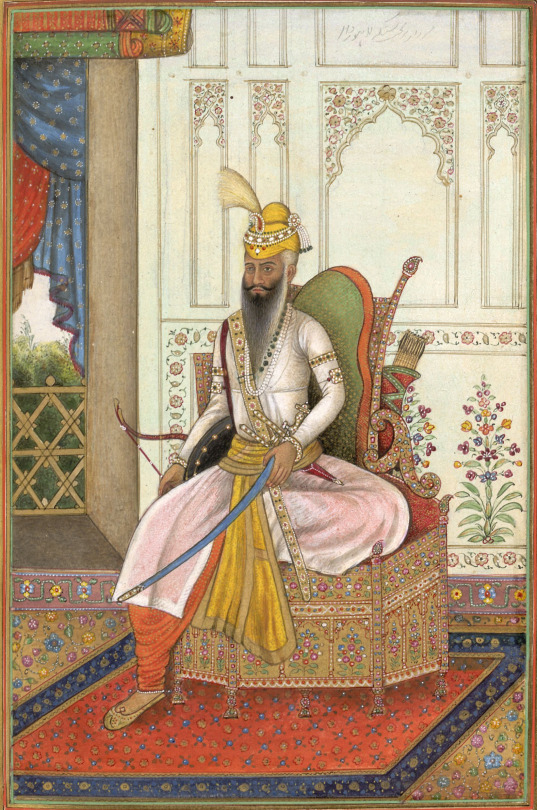

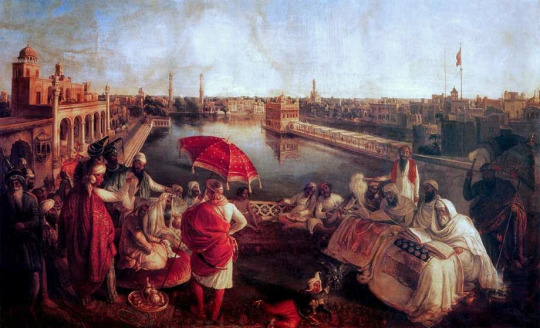
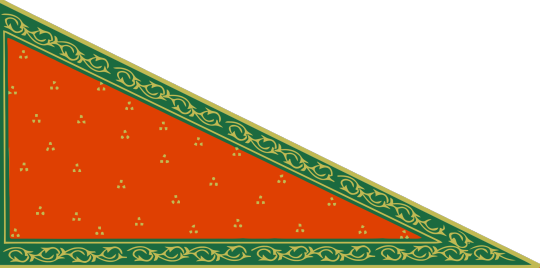
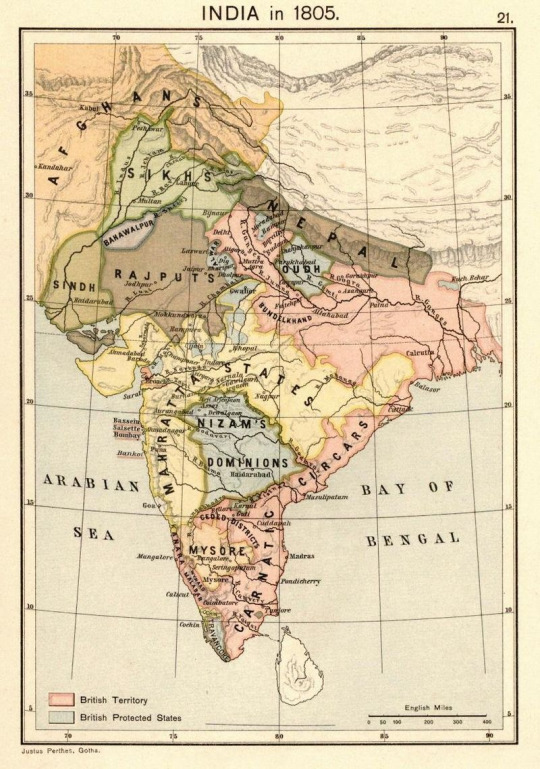
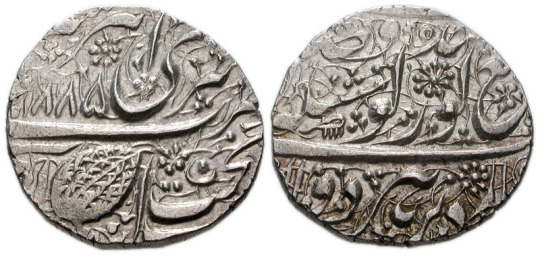
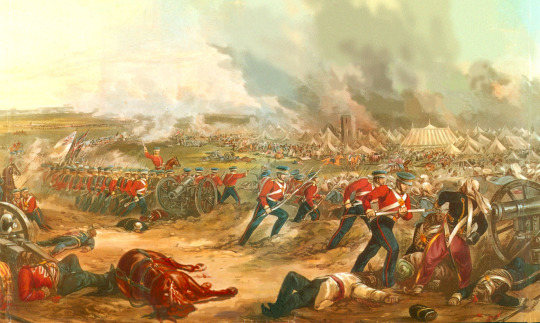
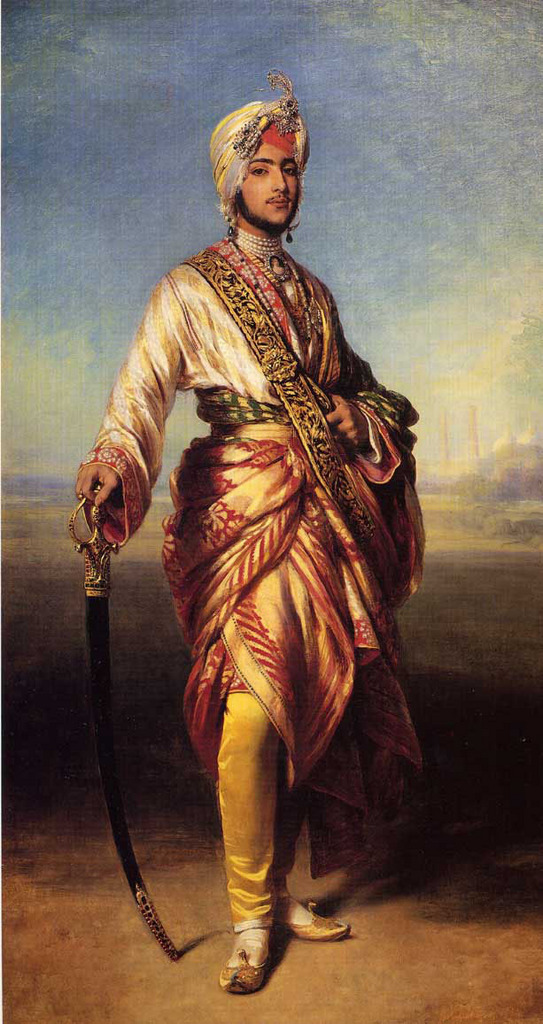
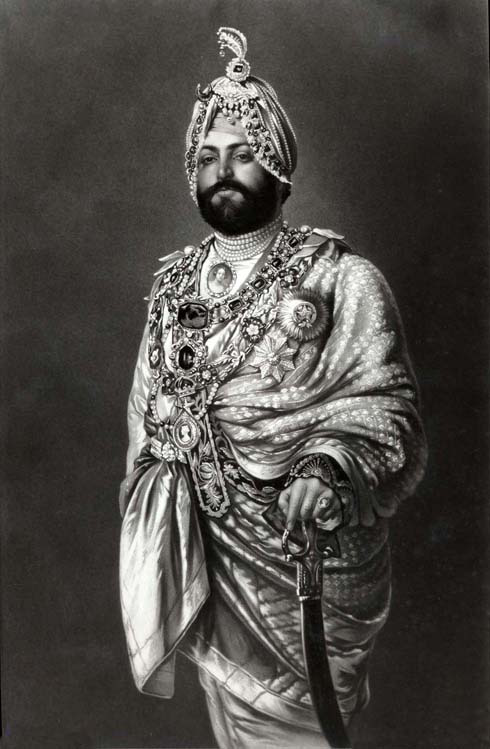
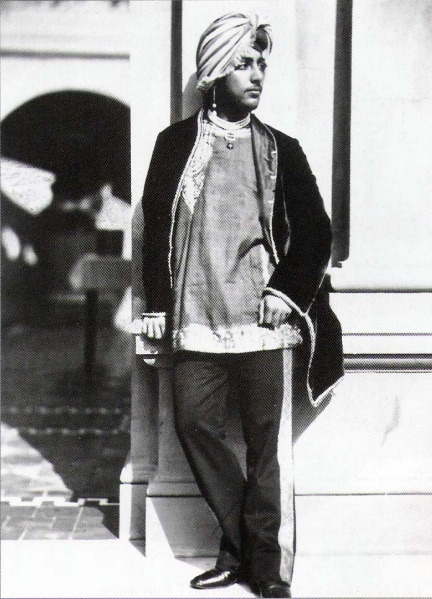
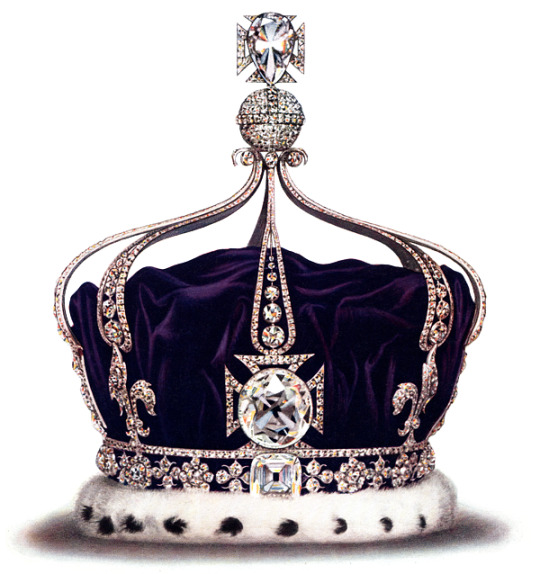
#military history#history#sikh#sikhism#india#british east india company#british imperialism#british empire#19th century#victorian era#ranjit singh#punjab#pakistan#18th century#mughal empire#maratha empire#queen victoria#british india
7 notes
·
View notes
Text
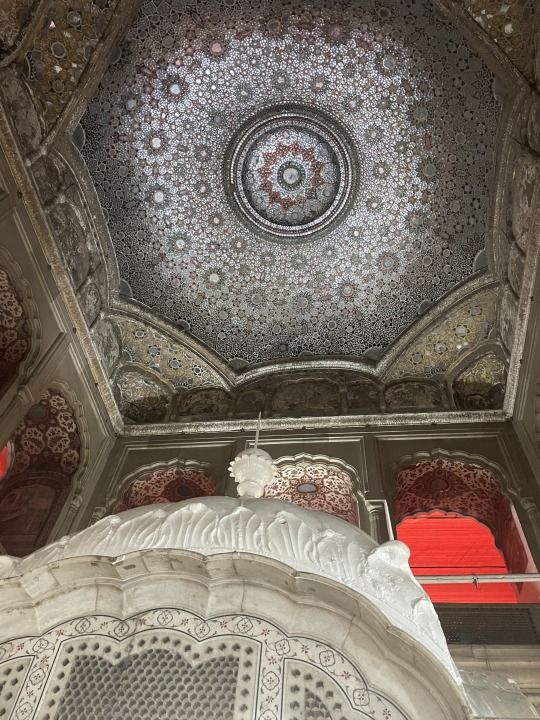
5 notes
·
View notes
Text
Cute boy 😊
instagram
#architecture#artists on tumblr#bollywood#celebrities#star wars#art#instagram#instavideo#viral video#Sardar#sikhism#punjab#punjabi#cute#Cute boy#children#viralpost#tumblr milestone#photographers on tumblr#writers on tumblr#poets on tumblr#transformation#feeling myself#video games#youtube video#my video#music video#Instagram
3 notes
·
View notes
Text

#CONCEPT CONFERENCES PVT LTD wishes you all Happy Gurunanak Jayanti#gurunanak#waheguru#gurbani#ji#sikhism#khalsa#sikh#gurunanakdevji#satnamwaheguru#waheguruji#sikhi#gurugobindsinghji#punjab#gurbaniquotes#guru#sikhs#gurudwara#goldentemple#gurugranthsahibji#punjabi#shabad#amritsar#singh#gurugranthsahib#fateh#conceptconferences#conceptconferencespvtltd
2 notes
·
View notes
Text

Send from Sansgreet Android App. Sanskrit greetings app from team @livesanskrit .
It's the first Android app for sending @sanskrit greetings. Download app from https://livesanskrit.com/sansgreet
Baba Buddha.
Baba Buddha (6 October 1506 – 8 September 1631) was a prime figure in early Sikhism. He was born in 1506 in the village of Kathu Nangal, in Amritsar. As a child, while grazing cattle outside his village, he met Guru Nanak. He asked Guru Nanak many questions regarding life and death, such that, at his young age, Guru Nanak blessed him with name Buddha, as he spoke as if he were a wise elder. He was one of the earliest Sikhs of Guru Nanak. He performed the formal coronation ceremonies of five Sikh gurus; Guru Angad, Guru Amar Das, Guru Ram Das, Guru Arjan, and Guru Hargobind.
#sansgreet #sanskritgreetings #greetingsinsanskrit #sanskritquotes #sanskritthoughts #emergingsanskrit #sanskrittrends #trendsinsanskrit #livesanskrit #sanskritlanguage #sanskritlove #sanskritdailyquotes #sanskritdailythoughts #sanskrit #samskrit #resanskrit #bababuddhaji #bababuddha #sikhism #sikhismੴ #amritsar #punjab #punjabi #sikhguru #sikh #sikhexpo #harmandirsahib #adigranth #granthi #celebratingsanskrit
#greetingsinsanskrit#sanskritgreetings#sanskrittrends#trendsinsanskrit#livesanskrit#sanskrit#celebratingsanskrit#sikhism#sikh#punjab#singh
2 notes
·
View notes
Text

Maharaja Ranjit Singh 's Darbar
if you want to know about him you should visit
this site
2 notes
·
View notes
Photo

Sikh Sarbloh Kara Design Bangle Singh Kaur Khalsa Chakri Kada Iron NEW Kada Z12
Sikh Sarbloh Kara Design Bangle Singh Kaur Khalsa Chakri Kada Iron Kada NEW
Hhand made, hand engraved, JOINTLESS Sarbloh Kara.
Moon design engraved on both sides of this kara beautifully by hand, please check photos.
Kara Ref: Z12
Width Kara is Approx 6mm
Thickness (From Inner Circumference to outer edge of Chakri) is approx. 12.5mm
Weight is approx 90-110g (Variable due to size)
Please note each Kara is made by hand and is Unique. Therefore, design may slightly vary.
There may be little bit rust present which is seen commonly in all SARBLOH KARAS due to purity of metal/wrought iron. Brilliant finish and very decorative. Ideal gift item for loved ones on all occasions.
P.S. Colour of item may slightly vary due to camera flash and light conditions. Some Kara may have negligible small black grinding mark on the kara joint. This is always seen on all kara as most of the Kara making/shaping work is done by hands. However, this do not affect the quality/look of Kara
https://www.ebay.co.uk/itm/Sikh-Sarbloh-Kara-Design-Bangle-Singh-Kaur-Khalsa-Chakri-Kada-Iron-NEW-Kada-Z12-/275954583902
#Sikh singh kaur#Khalsa punjabi kara#steel kada#Sikhism punjab#panjabi Panjab#steel bangle#brass bangle#copper bracelet#sikh kakaar 5ks#sikh kakar#Khalsa bangle#sikh karra#Sarbloh kara#stainless steel kara
0 notes
Text
Darbar Of Khalsa..🙏🏻
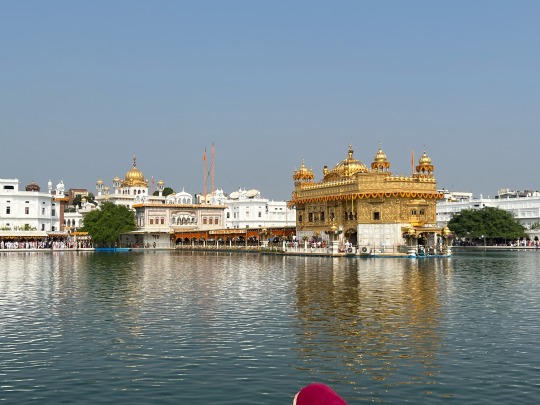
{Pictures by Prabhjot Kaur…}
Harminder Sahib or Darbar Sahib, a gurudwara located in Amritsar, Punjab, India. This is spiritually the most significant shrine in Sikhism.
For some people its just like any other Gurudwara, for some it’s just a tourist place, for some just a shrine, or its just a religious place, for some it’s a place to fill their stomach, for some its a place to stay, for some its place of full of life and people. But for me its not this, for me it’s different.
Being a child in Sikh family who belongs to Amritsar, the heart of Punjab, meaning of Darbar sahib is huge for me. It’s a place to refresh the soul, place where no one will judge you, where no one will ask you for your identity, you can sit anywhere in the Darbar Sahib and get inner peace. The premises of Darbar sahib consists of four doors in four directions which indicates that doors are open for everyone and everyone will be treated same way, no one is special or anything. This is the Highest place in Sikhism, where you’ll see everyone is praying, doing Path (reading holy scripts).
If someone asks me my favourite place? My answer is Darbar Sahib ‘cause it’s not just a place, it’s an emotion which can’t be described in words, you can only feel it. Whenever I visit the place, I get emotional. It seems like it’s the place where you can put your act of being which you do in front of the world and you can be original. The place is full of life, hope, patience, blessings, peace the inner peace and happiness. It’s not only a place of “Bhakti” but also a site of sacrifices which includes the blood of many Sikh’s and Shaheed’s, in which The Battle of Amritsar and operation Blue Star are included, in which more than thousand Sikhs became martyrs. According to Sikhism it’s a story of SABAR, SHUKAR, SIDAK, SIMARN DI MISAAL.
The Darbar sahib doesn’t only stand for religion but the Akaal Takht sahib (in front of Darbar sahib) stands for politics, in significance that religion can’t work without Politics and vice versa. It signifies the life of human, where we learn humanity, love, hope and equality. It’s the highest school of Sikhism.
If someone wants to know what is Sikhism? They should visit Darbar Sahib.
#amritsar#punjabi#punjab#sikhism#sikh#humanity#peace#peaceful#inner peace#photooftheday#photography#darbarsahib#trending#trends#religion#khalsa#goodtimeswithscar
5 notes
·
View notes
Text

Wishing everyone strength, resilience, and wisdom on Guru Gobind Singh Ji’s birthday. May his divine blessings fill everyone’s life with light and harmony. Happy Guru Gobind Singh Jayanti from the entire team of Greenbird Air and Train Ambulance!
+91-9870343712, +91-987031471
#greenbirdairambulance#gurugobindsinghji#waheguru#gurunanakdevji#gurbani#gurugranthsahibji#waheguruji#sikh#khalsa#sikhism#gurugobindsingh#punjab#amritsar#goldentemple#gurbaniquotes#satnamwaheguru
0 notes
Text

"Veer Bal Diwas stands as a reminder of courage and sacrifice. The story of the Sahibzadas is an integral part of our heritage, inspiring leaders and travelers alike to explore the historic and cultural treasures of Punjab.
0 notes
Video
youtube
(via Golden Temple Amritsar Punjab | A Spiritual Oasis of Peace & Devotion)
0 notes
